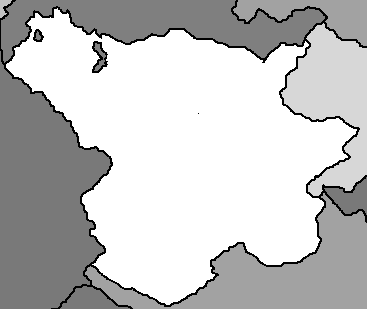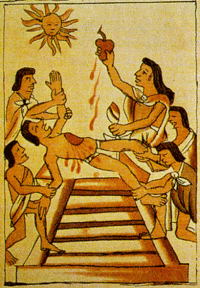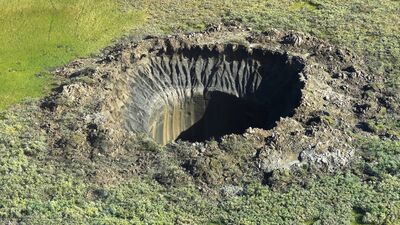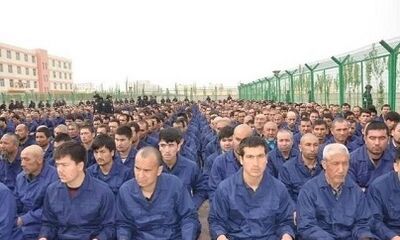Preli: Difference between revisions
| Line 112: | Line 112: | ||
! Religious Group !! Total Population | ! Religious Group !! Total Population | ||
|- | |- | ||
| Muslim || | | Muslim || 12,202,258 | ||
|- | |- | ||
| Christian || 2,198,531 | | Christian || 2,198,531 | ||
| Line 120: | Line 120: | ||
| Other (Hindu, Sikh, Atheist etc.)|| 5 | | Other (Hindu, Sikh, Atheist etc.)|| 5 | ||
|- | |- | ||
| '''Total Population''' || ''' | | '''Total Population''' || '''14,717,349''' | ||
|} | |} | ||
Revision as of 14:43, 9 January 2021
The Holy Empire of Preli | |
|---|---|
|
Flag | |
| Motto: "From Dust, We Return" | |
 Overview of Preli territory | |
 Administrative Districts of Preli | |
| Capital and largest city | Dipito |
| Official languages | |
| Ethnic groups | |
| Religion | Islam |
| Demonym(s) | Prelian |
| Government | Caliphate |
• Caliph | Khalid II |
| Legislature | Parliament |
| Council of Ulema | |
| House of Represenatives | |
| Independence | |
• Established | 20 August 2001 |
• Recognised | 1 October 2002 |
| Currency | Prelian Dirham (PDM) |
| Date format | dd/mm/yyyy |
| Driving side | left |
The Holy Empire of Preli, most commonly referred to as Preli, is a landlocked Islamic caliphate located on the continent of Ausiana in the Coalition of Crown Albatross.
It is bordered to the north by Bangaradesh, the east by Arkanistan and Pekastan, to the south by Mingonia and to the west by Yuan.
Etymology
Preli is the shortened version of the original name of the region known as Preliprestina. The most popular explanation as to why the name was shortened is a folktale story of when refugees arrived into the land following the Evil Replacement, they saw damaged signs from the explosion caused by the Nuclear Explosion of Sabmud only showing the words "Preli" on them, thereby causing those fleeing to believe they had arrived in Preli, thus giving the land it's new name.
However, historical scholars believe the word Preli comes from the native Brundian language for "Peace" and that Prestina is the name of a mythical goddess revered in Neskism (literally "Prestinas Peace" or “Peace from Prestina"), an extinct religion that no longer exists. Therefore, Muslims removed this part of the name and simply named the country Preli.
History
Prehistory (est. 100,000BH - 40,000BH)
Early Society: Anekki Tribe
The Land of Preliprestina has evidence of human habitation dating back 102,000 years ago. Clay pottery dating to 99,600 years ago showcases the Anneki society, an ancient war tribe with drawings of community prayer rituals, agricultural farming and violent torture practices. The National Archaeologists Society of Preli during Project Asremina found the remains of over 20,000 Homo sapien skulls cemented together, the largest mass burial recorded to date. Due to the Anekki's violent and unsustainable behaviour, the tribe is believed to have become extinct in the year 95,500 BH.
Early Civilizations: Nomadic Empire
Approximately 72,000 years ago, the population of the entire region was estimated to be around 600,000. This was due largely to the prosperity from the migration of nomadic tribes from the east and their knowledge of extensive trading routes across the continent. The nomadic tribes established one of the earliest civilisations of Preliprestina and soon became the Nomadic Empire.
Eruption of Mount Dipito
The Eruption of Mount Dipito dating to around 40,000 years ago, caused the entire extinction of those living in the neighbouring cities. Those who experienced it worst were the trading towns of Morno and of course Dipito. As the largest volcano in the region, Mount Dipito erupted quickly and violently, causing mass volcanic "meteor-like" debri to fall from the sky. The aftermath can still be seen today at The National King Reitius Park, where the park has Government-protected sites for tourists to view huge craters in the ground which to this day contain untouched remains of silverware, coins and jewellery.
Middle Ages and Rise of Neskism (800AH - 1552AH)
Shortly before the advent of Neskism, apart from trading settlements (such as Dipatio and Morno), much of what was to become Preliprestina was populated by nomadic tribal societies. The Neskism prophet Lorbi was born in Morno in about 881 AH. In the early 10th century, Lorbi united the various pagan tribes of the region and created a single Neskini religious polity. Following his death in 942 AA, his followers rapidly expanded the territory under Neskini rule beyond Preliprestina, conquering huge and unprecedented swathes of territory in a matter of decades. Preliprestina soon became a more politically peripheral region of the Neskini world as the focus shifted to the vast and newly conquered lands.
Brundi's originating from modern-day Preli, the Gorbaz in particular, founded the Rushydune (942–1002), Ohmeard (1002–1199), Ahbarksid (1199-1544) and the Skinnimid (1544–1552) caliphates.
At the height of its power, Preliprestina experienced a period of cultural, economic, and scientific advancement, known as “The Flourishing”. This period is traditionally understood to have begun during the reign of the Ahbarksid caliph Arun Meshar (1210-1255) with the creation of The Holy Society of Scholars of Perf, the world's largest city by then, where Neskini scholars and polymaths from various parts of the world with different cultural backgrounds were mandated to gather and translate all of the world's classical knowledge into English, Brundian, Scartini and Arabic.
Pre-Modern Times (1954-1999)
The Nuclear Explosion of Sabmud
After reaching such a great extent of power, the State of Otarani covered almost ⅓ of the continent's area and had 44 million people living in the capital city of Dipito. Following the War of Borkshik, also called the Revolution of Borshik, the government realised huge defects in military equipment including the use of poorly designed weaponry and lack of utilisation of nuclear energy.
Therefore, King Oratisi V invested in the manufacturing and development of nuclear resources including switching from alternate energy, the creation of nuclear weaponry and the creation of The Department of Biowarfare - also known as Project “Yakra” (literally translating from Brundian for “Evil”)
However in 1968, Sabmud Industries, the largest nuclear factory near the city of Byzitni in Preliprestina went into critical malfunction and exploded - modern scientists believe based on the area of devastation caused that the explosion was equivalent to 150,000 DP (or 15,000,000 TNT).
The explosion, similar to the eruption of Mount Dipito, caused the extinction of all its residents. For 29 years, in order to reduce the spread of radioactive contamination from the wreckage, Preliprestina remained a non-entrance zone by various nations in the international community and forbade entry into the country under any circumstances.
The Evil Replacement
The Evil Replacement in Prelian history is a play on the phrase The Great Replacement, and refers to the collective anti-Islamic policies and agendas that were instigated by governments to replace and remove the native Muslim communities residing in the countries. These efforts resulted in mass propaganda campaigns, suppression of Islamic leaders and figureheads and in some cases even genocide.
As a result, Muslims escaped these regions and sought refugee in neighbouring countries. However, a large group of Muslims decided to stay in the previous region of Preliprestina, ignoring the longstanding ban on the destroyed region and resided in the destroyed infrastructure. After 18 months of stability and peace due to international avoidance of the area, the Muslims of Preli decided to self-establish themselves as a free nation with full sovereignty and began efforts to become internationally recognised. The Holy Empire of Preli was established in the year 2001 and became a full citizen of the Coalition of Crown Albatross region in 2020.
Geography and Climate
Preli is a landlocked country on the Iearth continent of Ausiana with borders along Barangadesh, Arakinistan, Pekastan, Mingonia and Yuan. The geography and climate of Preli are extremely diverse, and the country is home to a wide variety of wildlife including the national animal, the Prelian Ox. The diversity of the landscape and climate in Preli mainly across the North and South regions allows for a wide variety of climates. Notably in the South, temperatures can reach as low as -33°C in the winter seasons, whereas in the North during the summer temperatures can reach scorching levels of heat peaking at 48°C. Preli boasts of several mountainous ranges, the most popular being the Lorfingo-Craniri Alcs including the largest dormant volcano in the region, Mount Dipito.
Demographics
Language
Religion
The state religion in Preli is Islam. Freedom of religion for those that practice one of the Abrahamic faiths is guaranteed by the Shari'a law. However, they are not allowed to openly express their beliefs and is heavily supressed in the public sphere.
Considering Preli used to be the epicentre of Neskism, all followers have become completely extinct and there exists only fragments of religious manuscripts with reference to religious creed and history from Neskism.
Estimates of the modern Prelian population identifying as Muslim range between 75% and 90%, with the remaining 10–25% of the population identifying as Christian or Jewish. There are little to no other religious groups or sects of Islam residing within Preli due to the government's hostile national policy against Polytheism in all forms.
| Religious Group | Total Population |
|---|---|
| Muslim | 12,202,258 |
| Christian | 2,198,531 |
| Jewish | 316,555 |
| Other (Hindu, Sikh, Atheist etc.) | 5 |
| Total Population | 14,717,349 |






